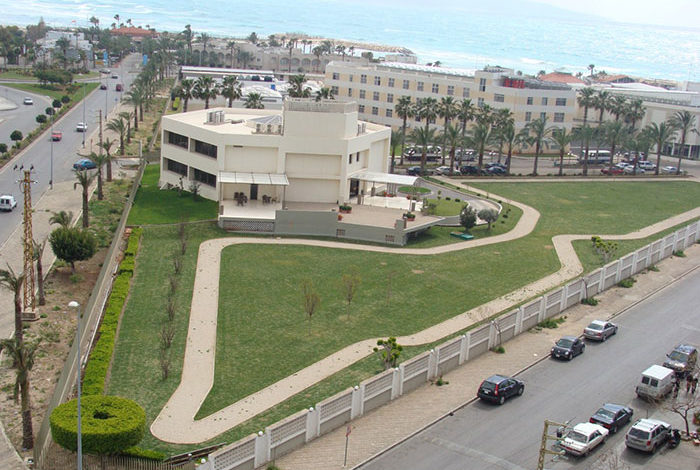
Introduction: This is the second article in a three-part series. Part one looked at how the Imam Sadr Foundation addresses steps the ISF is taking to help improve mental as well as physical health in Lebanon. This article looks at the ISF’s efforts in empowering women.
The Imam Sadr Foundation is a leader in the cultural, health, social and economic empowerment of women. Indeed, the female graduates of the foundation set an example as women competently and responsibly participating in the social and economic lives of their families and community. Moreover, the foundation seeks to care for and educate children and youths in a safe and organized environment that guarantees social awareness and true learning for all. It hopes to provide them with comprehensive care within its cultural complex and at home; and to offer them holistic primary health care, while ensuring the quality and standards that meet the social, economic and health needs of communities. The foundation aspires to deliver to each of the targeted family members the proper health care at the proper time and place.
Based on these set priorities enshrined in our organizational vision, the administration proceeded to formulate a clear and comprehensive executive plan aimed at achieving our mission while adopting the balanced scorecard (BSC) approach.
As a result, four strategic axes were mapped: women’s empowerment, child care and education, primary healthcare provision and good governance.
The goals are distributed across four basic dimensions. The first is human resources, i.e. learning and development, through skills-building and developing the educational, professional, health, infrastructure and IT knowledge base. The staff will be subsequently able, through the second dimension (programs, systems and internal operations), to develop vocational training, education and specialization curricula for the targeted groups and to create a favorable national environment for the empowerment of Lebanese women, thus helping them achieve greater balance in their family, social and economic life. Moreover, this allows for improved welfare and health services, increases the efficiency of the organizational structure and promotes the image of the foundation in Lebanon and abroad. At this stage, the staff is enabled, according to the third dimension— which tackles financial resources— to reinforce the foundation’s financial planning in order to better serve the targeted beneficiaries who are addressed in the fourth dimension, thus achieving a modern society that believes in social justice and is free from ignorance, poverty, illness and violence.
Coverage
The main complex of the Imam Sadr Foundation occupies land of 30,000 square miles, close to the heart of the city of Tyre, a sizable cultural and educational complex. A smaller one is active in the southern suburbs of Beirut, while seven community development centers cover the geography of the south. These venues host several schools, vocational training centers, dispensaries, specialized services, catering, orphanages and— most importantly— a hub to convene, to discuss and to agree on the future we deserve. The spectacular annual event, in this context, is the “Common Term Conference”, taking place in Beirut.

Preparedness
Considering the huge consequences of the current crisis that invades the region, combined with the fact that the area may be exposed to further emergency situations where entire communities are vulnerable, we must continue building our preparedness capabilities. In this context, many capacity building activities are underway to upgrade the skills of our teams. Situation mapping is under continuous updating as well.
After many sporadic training activities, the Imam Sadr Foundation decided to institutionalize its capacity building activities and incepted a structured branch named Taqat (potentials) in 2010.
The purpose of Taqat is to enhance the capacity of community-based workers through equipping them with relevant organizational and assessment tools and sensitizing them towards the specific contextual factors that could affect their work, while addressing the development issues in Lebanon in general and in its south in particular.
Through interaction with representatives of several CBOs, ISF improves its visibility for the role it is fulfilling and increases its awareness of the situation of the marginalized groups within the community where it works. The dialogue generated inspires the designers and functions as a means of gaining insight into community needs and aspirations.
The content of the training curriculum taking place in the foundation is linked to civic engagement issues such as governance, advocacy, increased accountability and social responsibility. Further awareness of legal rights of marginalized groups is omnipresent as well.
Bridging
Finally, ISF’s role as a hub for the societal synergy can be summarized as follows:
Troublesome issues and substantial challenges require adopting the concept of solidarity and cooperation as a way of living, thinking and working. ISF already recorded many breakthroughs, despite the tough circumstances that invaded the context where the foundation operates.
Following are some examples:
1. Rural centers (dispensaries previously) are being transformed into rural and social development hubs.
2. The foundation’s premises serve as a location for workshops, as well as coordination and communication forums.
3. The Imam Sadr Foundation is actively involved in a network of regional and international contacts and linkages related to development and takes part in a number of regional and international fora.
4. The foundation establishes strategic alliances with many international and regional development agencies.
5. The foundation is well connected to the Lebanese Diaspora. Migration has become a central element in international relations and world synergy.
Next Time: Part Three of this series examines the characteristics of the region served by the Imam Sadr Foundation.






Leave a Reply